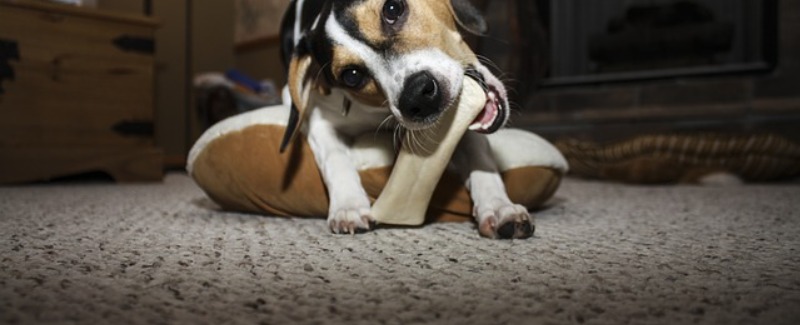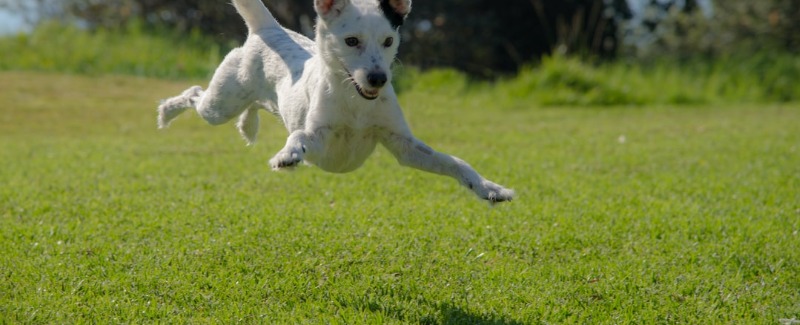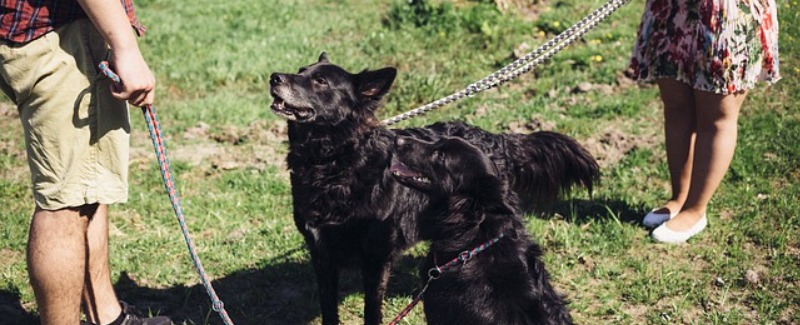After several days of random object exchanges, your dog should be happy to see you approaching him when he has something in his mouth, knowing it means a good deal for him. At the very least, he’ll get something good in exchange for what he has, and he might even get what he has back again. Now that you have the behavior you want, the next step is to put it on command.
Drop It on Command
Contents
After you’ve done at least 25–30 successful object exchanges with a treat at your dog’s nose when you give the command, try doing it without the treat. Do everything else the same way you have been: ask your dog, and hold your hand out for, whatever he has, just without the treat in your hand. If he gives the object to you, have a little party with several treats in a row. If he doesn’t give it up on your command, say, “Too bad” and eat (or pretend to eat) the treats yourself. The next time you try, go back to using the treat with the command for another 25 repetitions, then try again without the treat.
When your dog is readily giving up what he has without the treat in your hand, start giving your command before you reach for what he has. Not that that’s how you’re going to do it all the time, but you do want him to respond just on the verbal command, without the additional hand cue. That way, you can tell him to drop something from across the room or yard, and have confidence that he will.
Speed-training Drop It
For extra oomph in your training program, and to teach your dog to drop it on command quickly, don’t just wait for him to have something in his mouth to work on training; set up training opportunities. Use a variety of low-, medium-, and high-value items so the behavior is there when you need it, no matter what it is you need your dog to drop. Start with items of lower value, the stuff your dog has access to all the time, like his normal toys and chewies.
Encourage him to “take it” before asking him to give it back to you. You can reward him with a separate treat, or by giving the original item back to him. Move up to higher-value items like marrowbones. Give him the higher-value item, but keep your hand on it. Ask him to give it to you several times before you let him keep it.
For extra practice on really high-value items, try cooking a piece of bacon on a paper plate in the microwave. Eat the bacon yourself (or crumble it up to use as extra special training treats), and crumple up the paper plate. Leave the paper plate on the floor so you can practice the drop it command when your dog picks up the plate to get to what he thinks is inside. For an extra kick, use the bacon as his reward for dropping the bacon-scented plate.
If your dog won’t drop something, don’t panic. Approach him calmly, stepping on his leash or dragline to prevent him from taking off. Grasp the top of your dog’s muzzle with your left hand, inserting your thumb and middle finger just behind his canine teeth (the “fangs”). Use your right hand to hold the lower jaw, approximately the same way, and use your left pointer finger to put slight pressure on his gums or incisors (front teeth) until he opens his mouth.
When he does, use your right middle or ring finger to hold the lower jaw down while you quickly retrieve the item. It takes practice to get it right, and like all training, you should practice opening his mouth (and perhaps popping a treat in) when you don’t need it, so you know it’ll be there when you do. If your dog behaves aggressively when you try to get something from him, consult a trainer to help.
Can I See That?
If you didn’t see your dog grab something he shouldn’t, then it’s too late to tell him to leave it, so you should also teach him to “drop it” on command.
You want your dog to willingly give you anything she has in her mouth when you ask for it, whether the item is hers, yours, or a stick from the yard. The way to get her to be happy giving you anything, even high-value items, is to do literally hundreds of object exchanges, or trades, with anything and everything she puts in her mouth from the moment your bring your dog home. Any time you notice her chewing or carrying something, approach her with a really good treat.
Ask, “Can I see that?” (or “Drop it,” “Give,” or whatever you want your command to be) as you bring the treat right to her nose with one hand, and either lightly grasp or hold your hand out to catch what she has in her mouth. The instant she drops it, CR/treat. Inspect whatever she gave you, and if it’s something legal, give it back to her. If not, redirect her attention and interest with something else.
Keeping the Drama Out of Drop It
How you approach your dog when he has something you’re going to take from him (even temporarily, as a training exercise, or to make sure what he has is safe), makes all the difference in whether he’s more likely to willingly give it to you, or feel the need to defend it. Approach him calmly, even if the item he has is something valuable to you. If you go storming after him, chances are he’ll run from you, destroying or eating the object in his haste to keep it, or even become aggressive in his attempt to keep his treasure.
Don’t neglect “drop it” training! You never know what you might need your dog to drop. Whether it’s his own toys during fetch or tug-of-war games, or chicken bones from the trash, you need your dog to drop it the moment you say it, no matter what it is — it could save his life!
From the time you bring your dog home, never scold him or punish him for bringing something to you, even if it’s something he wasn’t supposed to have. He won’t understand that you’re punishing him for taking the item. To him, the punishment is for presenting it to you. Be happy to receive anything your dog brings. If your dog habitually picks up forbidden objects, good management of him and your stuff is crucial, unless you want object exchanges to be your full-time job until your dog matures.



